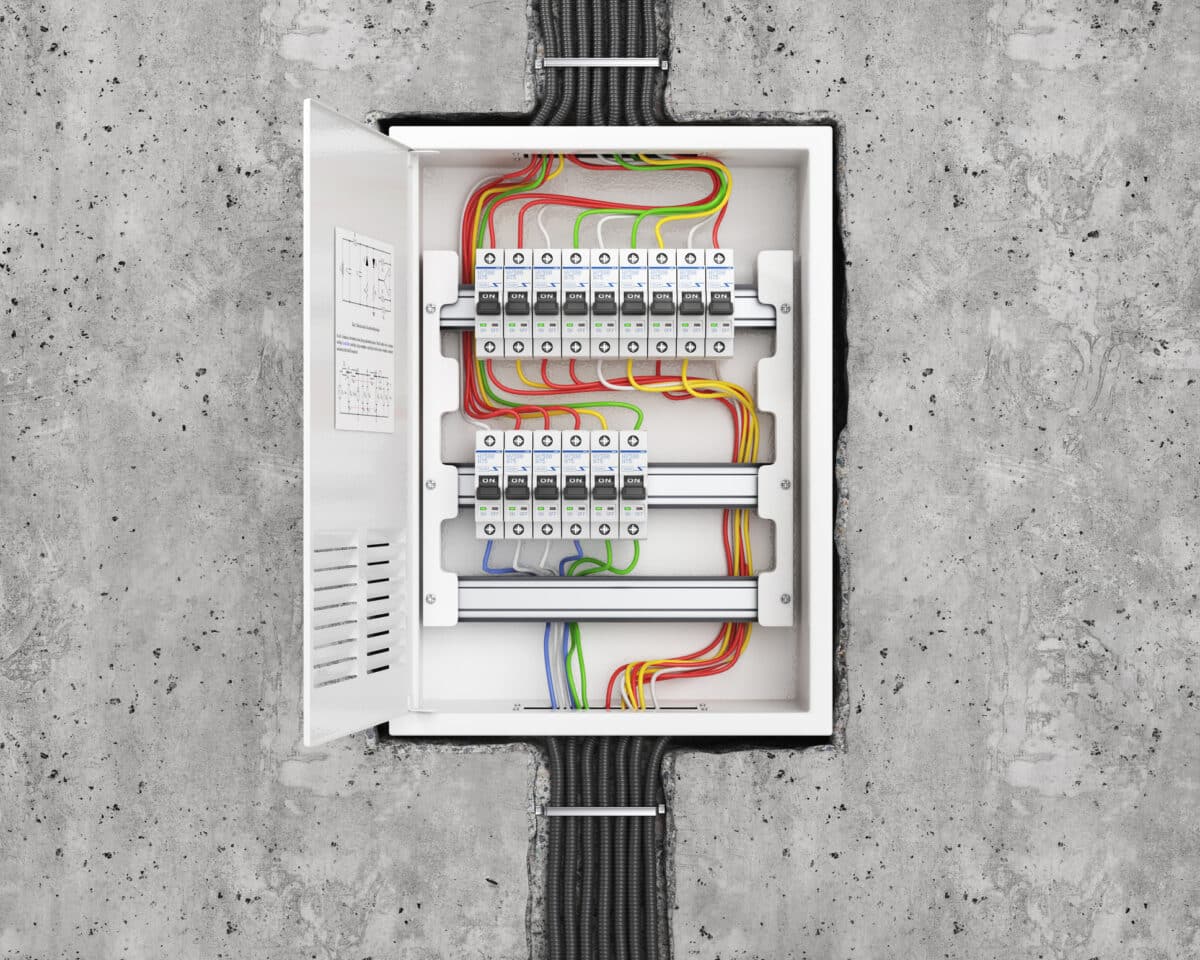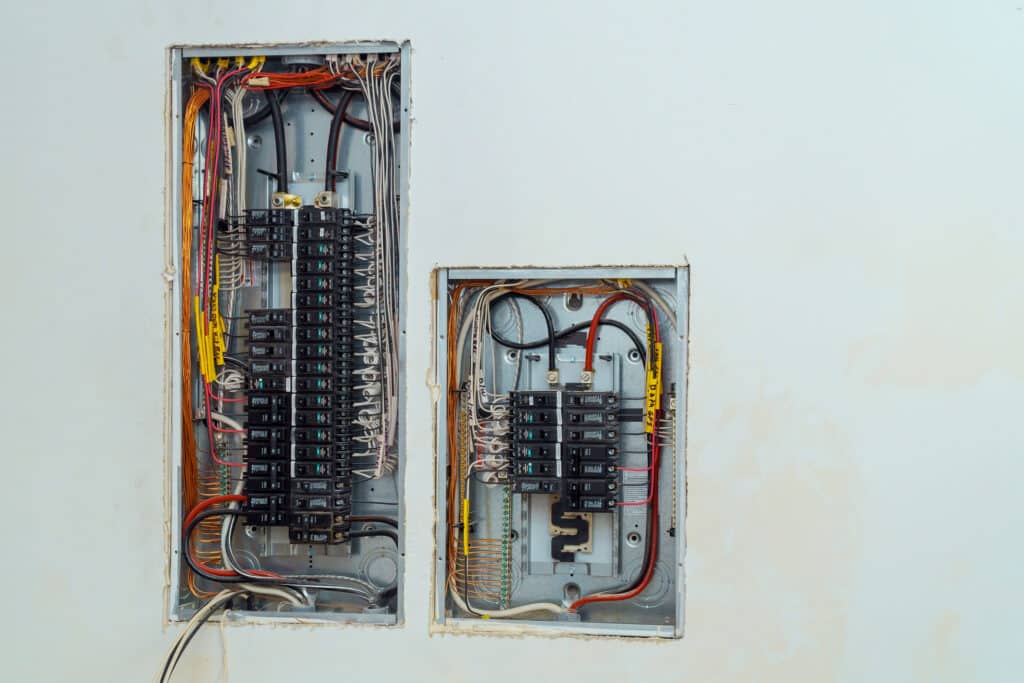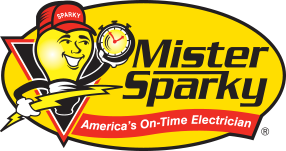Types of Subpanels and Their Role in Home Electrical Systems

In the heart of Quinby, SC, where modern living meets the charm of the south, the demand for efficient home electrical systems is on the rise. Subpanels have emerged as a crucial component in meeting this demand, serving as the backbone for distributing electricity throughout homes, especially in areas like garages or home additions. They not only ensure that power is efficiently routed but also enhance safety by managing electrical loads and preventing circuit overloads. Understanding the various types of subpanels is key to optimizing your home’s electrical infrastructure for both safety and efficiency.
Subpanels, often considered the unsung heroes of electrical systems, play a pivotal role in extending the capabilities of your main electrical panel. By installing a subpanel, homeowners in Woodland Park, SC, can enjoy the benefits of having dedicated circuits for heavy appliances or workshop tools without burdening the main panel. This addition is not just about adding capacity, it’s about smartly organizing your electrical system to handle modern electrical needs without a hitch. The right type of subpanel can make a significant difference in how power is distributed and managed within your home.
Choosing the appropriate subpanel requires a good understanding of your home’s electrical needs and future expansion plans. Whether it’s for a newly constructed home in Florence, SC, or upgrading an older residence, the selection process involves considering the size, capacity, and type of subpanel that aligns with your electrical consumption patterns. Each type of subpanel comes with its own set of features designed to cater to different scenarios, from enhancing safety to improving circuit organization. This makes the choice of a subpanel a critical decision for homeowners aiming for an efficient and safe electrical system.
As we delve deeper into the world of subpanels, it’s important to remember that their installation and maintenance should always be handled by professionals. The benefits of having a well-chosen subpanel extend beyond mere convenience; they contribute to the overall safety and functionality of your home’s electrical system. In the following sections, we’ll explore the different types of subpanels and their specific roles in home electrical systems, providing you with the knowledge you need to make informed decisions about upgrading or installing a subpanel in your home.
Understanding the Basics of Subpanels in Home Wiring
Subpanels, integral to home wiring, ensure electricity reaches every corner of your home efficiently. They act like a bridge, connecting the main panel to various parts of the house, such as the garage or a new addition. This setup helps in managing the electrical load more effectively. It prevents the main panel from being overloaded, ensuring a safer electrical system.
In Quinby, homeowners appreciate the value of adding subpanels to their electrical setup. It allows them to allocate power to specific areas without the risk of overloading the circuit. For instance, if you have a workshop in your garage with heavy-duty tools, a subpanel can provide the necessary power independently. This not only enhances safety but also improves the overall functionality of your home’s electrical system.
Choosing the right subpanel involves understanding your home’s electrical needs. You should consider the total power consumption and any future additions you might plan. This foresight ensures that the subpanel you select can handle your current and future electrical requirements. With the right subpanel, you can avoid frequent upgrades and ensure your system is up to date.
Finally, the installation of subpanels is a task best left to professionals. They have the expertise to ensure that your electrical system’s expansion is done correctly and safely. Whether you’re in Woodland Park or another part of South Carolina, a professional electrician can guide you through the selection and installation process. This ensures your home’s electrical system operates efficiently and safely, meeting all your power needs.

Photo from iStock – Credit: photovs
Types of Subpanels and Their Specific Uses
Subpanels come in various types, each designed to meet specific needs within a home’s electrical system. For instance, a main lug subpanel is ideal for areas where the main breaker remains accessible, such as a detached garage. This type simplifies the process of directing power from the main panel, ensuring that electricity is efficiently distributed to where it’s needed most. In Quinby, SC, homeowners often opt for this type for its straightforward installation and effective power management.
Another popular choice is the main breaker subpanel, which includes its own main breaker to shut off power to all circuits within the subpanel. This feature adds an extra layer of safety, making it a preferred option for home additions where a clear, accessible shut-off point is necessary. In Woodland Park, SC, safety-conscious homeowners appreciate the added protection this type offers, especially in areas used by children or where water is present.
For those looking to future-proof their homes, a subpanel with ample space for additional circuits is a wise investment. As electrical needs grow, whether from new appliances or further home expansions, having the flexibility to add more circuits without major renovations is invaluable. This approach not only saves money in the long run but also ensures that your home’s electrical system can adapt to changing demands.
Lastly, the choice of a subpanel should always consider the electrical demands of the specific area it will serve. A workshop with high-powered tools requires a different subpanel than a home theater or a kitchen remodel. By matching the subpanel to the unique needs of each area, homeowners can ensure efficient and safe electrical distribution throughout their homes. With the right subpanel in place, managing power loads and enhancing circuit organization becomes a seamless part of home maintenance.
The Importance of Subpanels in Modern Electrical Systems
Subpanels play a crucial role in modern electrical systems, ensuring that homes in Quinby, SC, can handle the demands of today’s technology. They allow homeowners to distribute power efficiently, particularly in areas that require a significant amount of electricity. By doing so, subpanels help prevent the main electrical panel from overloading, safeguarding the home against potential electrical hazards. This makes them an indispensable part of any home’s electrical infrastructure.
In addition to enhancing safety, subpanels also offer the flexibility needed for future expansions or renovations. For instance, if a homeowner decides to add a home theater or convert a basement into a living space, having a subpanel can make the electrical upgrade process smoother and more cost-effective. This adaptability is especially beneficial in communities like Woodland Park, SC, where homes may undergo various transformations to suit the evolving needs of their occupants. Therefore, investing in a subpanel is not just about meeting current electrical needs but also preparing for what the future might bring.
Moreover, subpanels contribute to the overall efficiency of a home’s electrical system. By allocating circuits specifically for high-demand areas, they ensure that electricity is used in the most effective manner. This can lead to reduced energy consumption and potentially lower utility bills, making subpanels a smart choice for eco-conscious homeowners. The ability to manage power more efficiently also means fewer disruptions and a more reliable electrical supply throughout the home.
Ultimately, the importance of subpanels in modern electrical systems cannot be overstated. They provide a safer, more flexible, and efficient way to manage electrical power in homes. Whether it’s for a new construction project or upgrading an existing system, choosing the right subpanel is a decision that pays off in the long run. For residents of Florence, SC, and beyond, understanding and utilizing the benefits of subpanels is key to ensuring their homes are equipped to meet today’s electrical demands.
How to Determine the Right Subpanel for Your Home
Determining the right subpanel for your home starts with assessing your current and future electrical needs. Consider the appliances and devices you use daily and any additions or renovations you plan. This foresight helps ensure the subpanel you choose can handle your electrical demands, making your home in Quinby, SC, more efficient and safer. It’s a step that requires careful thought but pays off by providing reliable power where and when you need it.
Next, evaluate the space where the subpanel will be installed. Subpanels need proper ventilation and easy access for maintenance and emergency shut-offs. In Woodland Park, SC, for example, homeowners often place subpanels in garages or utility rooms. Choosing a location that’s both convenient and safe is crucial for the effective operation of your home’s electrical system.
Consulting with a professional electrician is an invaluable part of selecting the right subpanel. They can offer insights into the types of subpanels that best suit your home’s layout and electrical requirements. Their expertise ensures that your subpanel not only meets current codes but is also future-proofed against upcoming electrical needs. This professional guidance is key to making an informed decision that enhances your home’s electrical functionality.
Finally, consider the brand and warranty of the subpanel. Reliable manufacturers offer products that are durable and backed by strong warranties. This ensures that your investment is protected and that you have support in case of any issues. By taking the time to research and select a quality subpanel, you’re investing in the long-term safety and efficiency of your home’s electrical system.
Installation Considerations for Subpanels
When planning to install subpanels in your home, understanding the electrical layout is crucial. This ensures that the subpanel is placed in a location that optimally serves your needs, whether it’s in Quinby, SC, or another area. A well-thought-out installation spot allows for easy access during maintenance or emergencies. It also helps in efficiently managing the power distribution throughout your home.
Choosing the right cables and circuit breakers is another important step. The type and size of cables should match the electrical demands of the area the subpanel will serve. In Woodland Park, SC, for example, a professional electrician can provide guidance on the best options. This careful selection prevents potential overloads and enhances the safety of your electrical system.
Grounding and bonding the subpanel correctly are essential for preventing electrical shocks. This process ensures that in the event of a fault, the electrical current is safely directed away from the subpanel. It’s a critical safety measure that protects both the electrical system and the occupants of your home. Always have a qualified electrician perform this task to ensure it’s done according to local codes.
Finally, adhering to local building codes and regulations is paramount when installing subpanels. These codes are in place to ensure that all electrical work is carried out to a standard that guarantees safety and efficiency. Before starting the installation, it’s wise to consult with local authorities or hire a professional who is familiar with the specific requirements in your area. This step not only ensures compliance but also secures the overall well-being of your home’s electrical infrastructure.
Safety Tips for Managing and Maintaining Subpanels
Ensuring the safety and longevity of subpanels in your home starts with regular inspections. In Quinby, SC, it’s wise to have a professional electrician check your subpanel annually. They can spot potential issues before they become serious problems. This proactive approach helps maintain an efficient and safe electrical system.
Keeping the area around subpanels clear of clutter is another important safety tip. In Woodland Park, SC, ensuring that there’s easy access to the subpanel can be crucial in an emergency. It allows for quick shut-offs and prevents accidents. A clear space also aids in better ventilation, reducing the risk of overheating.
It’s essential to familiarize yourself with the signs of a malfunctioning subpanel. If you notice flickering lights, frequent tripping of breakers, or any unusual sounds, it’s time to call an electrician. These signs could indicate an electrical overload a more serious issue. Addressing these signs early can prevent damage and ensure your home’s safety.
Lastly, educating your household about the subpanel is beneficial. Everyone should know its location and understand the basics of its operation. This knowledge is particularly important in emergencies when quickly turning off power can prevent harm. By following these safety tips, you can manage and maintain your subpanels effectively, ensuring a safe electrical environment in your home.
Subpanels vs. Main Panels: Key Differences
Understanding the differences between subpanels and main panels is crucial for homeowners in Quinby, SC, looking to optimize their electrical systems. While both are essential components, their functions within the home’s electrical infrastructure vary significantly. Main panels serve as the primary hub for electricity distribution, where power from the utility company first enters the home. In contrast, subpanels act as secondary circuits, distributing power to specific areas or appliances enhancing efficiency and safety.
Subpanels offer a level of flexibility and convenience that main panels cannot match, especially in homes with extensive electrical needs or unique layouts. For instance, in a home with a workshop or a large garage in Woodland Park, SC, installing a subpanel can provide dedicated power to that area without overloading the main panel. This setup allows for easier and safer management of high-powered tools and equipment, ensuring that the electrical system can handle the demand.
Another key difference lies in the installation and expansion capabilities of subpanels compared to main panels. Subpanels can be added to an existing electrical system with relative ease, offering a cost-effective solution for homeowners looking to expand their electrical capacity. This is particularly beneficial for those planning future home additions or renovations, as it eliminates the need for a complete overhaul of the main panel.
Lastly, understanding the specific roles and benefits of subpanels versus main panels ensures that homeowners can make informed decisions about their electrical systems. Whether it’s improving safety, increasing efficiency, or preparing for future expansions, the choice between adding a subpanel or upgrading the main panel depends on the individual needs of the home. By considering these key differences, residents of Quinby, SC, and Woodland Park, SC, can ensure their homes are equipped to meet modern electrical demands.
Enhancing Home Electrical Efficiency with Subpanels
Enhancing the efficiency of home electrical systems is a priority for many homeowners in Quinby, SC. Subpanels play a significant role in this process by allowing for better distribution and management of electricity. By installing a subpanel, residents can ensure that power is directed precisely where it’s needed, without overloading the main panel. This not only improves safety but also optimizes the overall energy consumption of the home.
In areas like Woodland Park, SC, where homes may have unique electrical needs due to workshops or large appliances, subpanels offer a tailored solution. They provide the flexibility to allocate power effectively, ensuring that heavy-duty tools or additional rooms are well supplied. This targeted approach to power distribution helps prevent electrical issues and enhances the functionality of the home’s electrical system. As a result, homeowners can enjoy a more reliable and efficient power supply.
Moreover, the addition of subpanels can lead to potential savings on utility bills. By managing electrical loads more efficiently and reducing the strain on the main panel, subpanels help in minimizing unnecessary power usage. This efficiency not only contributes to a more eco-friendly home but also to a reduction in monthly expenses. Homeowners appreciate the dual benefit of contributing to environmental sustainability while also keeping costs in check.
Finally, planning for future expansions or renovations becomes simpler with subpanels. They provide a scalable solution that can adapt to changing electrical needs, making them an excellent investment for the long term. Whether it’s adding a home office, upgrading the kitchen, or installing new lighting, subpanels ensure that Quinby and Woodland Park residents can easily accommodate these enhancements. This adaptability underscores the importance of subpanels in creating efficient, safe, and flexible home electrical systems.

Photo from iStock – Credit: champpixs
Frequently Asked Questions
What are subpanels?
Subpanels are key components in home electrical systems, acting as secondary hubs for distributing power. They branch off from the main panel, directing electricity to specific areas like garages or home additions. By managing power loads more efficiently, they enhance circuit organization and safety. Understanding the different types of subpanels can significantly improve a home’s electrical functionality.
How do subpanels improve home safety?
Subpanels significantly enhance home safety by ensuring a balanced distribution of electricity. They prevent overloading by allocating power to specific areas, reducing the risk of electrical fires. By improving circuit organization, they also make it easier to isolate and fix issues. This setup supports safer, more efficient electrical management in homes.
Can I install a subpanel myself?
Installing a subpanel involves complex electrical work that requires knowledge of your home’s wiring and local building codes. It’s best to hire a professional electrician for this task. They ensure the installation is safe and meets all regulations. Trying to install a subpanel without the proper expertise can lead to serious safety hazards.
What types of subpanels exist?
Several types of subpanels are designed to meet different electrical needs in homes. Main lug panels, for example, connect directly to the main panel and are ideal for areas where electricity demand is high, like workshops. Breaker subpanels, on the other hand, include their own main breaker to shut off power to all circuits at once, enhancing safety. Each type offers unique benefits, ensuring there’s a suitable option for any home’s electrical requirements.
How do subpanels connect to the main panel?
Subpanels connect to the main panel through feeder wires that carry power from the main breaker. These wires run from the main panel’s breaker, ensuring a direct and secure supply of electricity. Electricians carefully size these wires to handle the expected load, preventing overheating and maintaining safety. This setup allows for efficient distribution of power to various parts of the home, supporting its electrical needs.
















